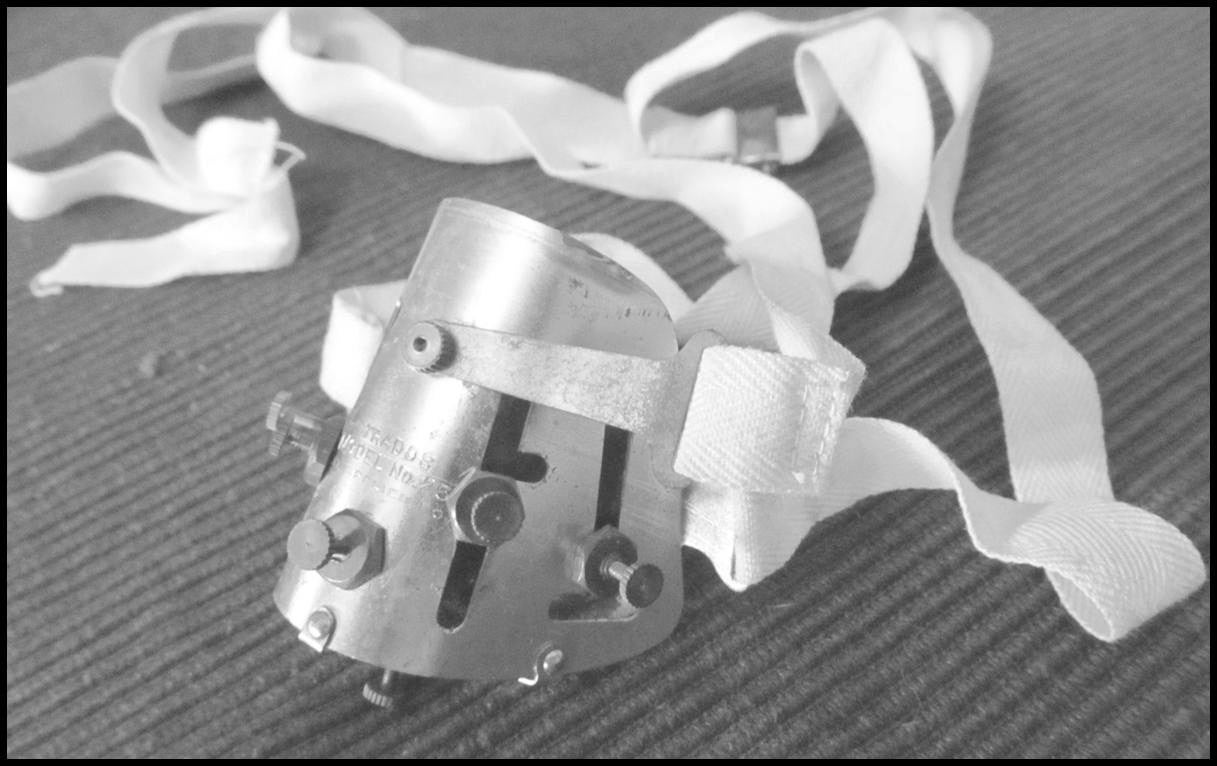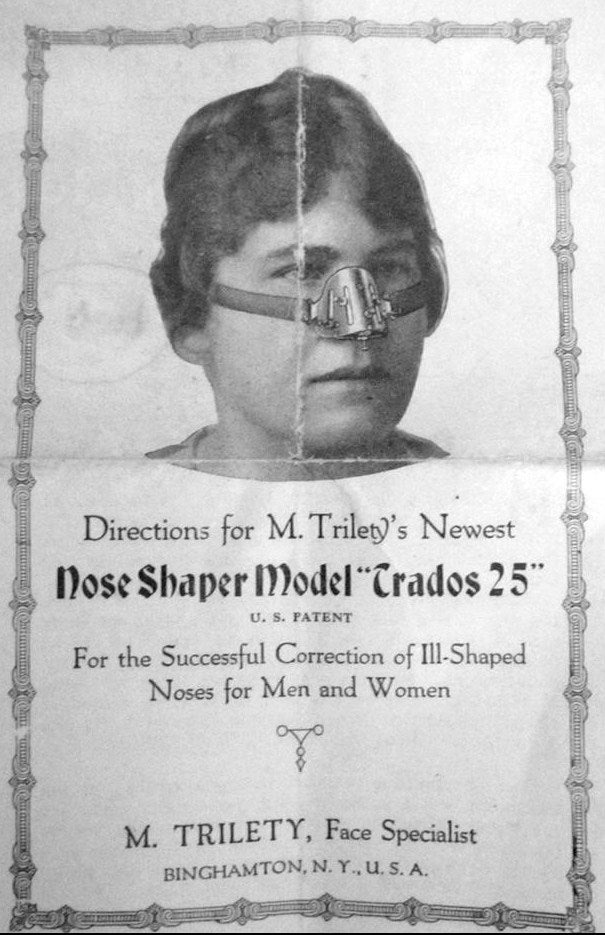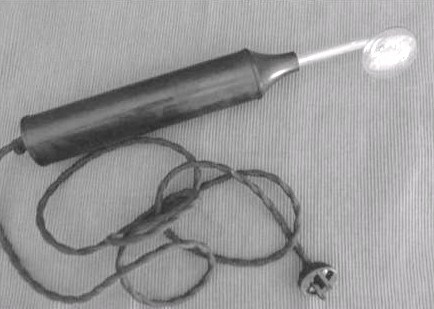Medical curiosities of the early 20th Century
Published 11:54 am Tuesday, August 1, 2017
Many people in the community know that the Bluegrass Heritage Museum is located in the former Guerrant Mission Clinic and Hospital. The Guerrants dedicated their lives to caring for the medical needs of the residents of Clark County and eastern Kentucky.
Most of the third floor exhibits honor the building’s history as a medical facility. The display case in the scrub room, for example, contains a variety of items used by the hospital and clinic in the care of their patients—syringes, transfusion bottles, gauze rolls, etc.
However, two artifacts on the far right side of the case’s top shelf very likely were never used in the Guerrant Clinic, yet they probably provoke more questions from visitors than all of the other items. They would be no mystery to people of the 1920s and 1930s, though, since they were then popular “medical” self-help devices sold by the thousands to the public.
One is the Trados 25 Model Nose Shaper, offered by “M. Trilety, Face Specialist,” according to the instruction booklet that accompanies it. This is a bent piece of brass with slots and screws, designed to fit over the nose and tie around the back and top of the head. An advertisement from 1918 claims that this model will “improve the shape of the nose by remoulding the cartilage and fleshy parts, safely, and painlessly.” It was also promoted as an inexpensive alternative to surgery.
The idea was to move and tighten the screws at various appropriate positions, following directions and diagrams included in the booklet, to achieve the desired nose shape. The user was encouraged to wear it a minimum of 30 minutes per day, though quicker results could supposedly be achieved by wearing the device more frequently.
Ah, but don’t be tempted to skip! M. Trilety warns, “I must caution you that the success you obtain will depend on your own diligence in applying the treatment….TO LEAVE OFF WEARING IT A SINGLE DAY…means that you will be obliged to continue the treatment longer.…”
Research for this article did not yield any personal testimonials as to Model 25’s actual effectiveness. However, interest in such a thing is apparently still quite prevalent. Googling “nose shaping device” leads to about 1,360,000 results, many offering sleek, modern day versions of the tortuous-looking Trados 25!
The other object of curiosity in the display case is a glass tube ending in a partially flattened sphere, with a handle and an electric cord attached. This is an example of a “Violet Ray Machine.” Such devices capitalized on the relatively new science of electricity and claimed to improve or cure an astoundingly wide variety of ailments.
The idea was to send a high-frequency current through the glass electrode (available in a variety of shapes for treating different parts of the body) which would produce “health-giving” ozone and a “cellular massage.” The machine could be held on the body directly or a short distance away, depending on the nature of the treatment. It offered to provide either a tranquilizing effect or a stimulant to increase circulation. The operating manual states that the “ozone being driven directly thru the skin into the tissues [accomplishes] an ‘ozonization’ of the blood.”
According to www.museumofquackery.com, “A hand-held coil feeds radio energy into a low-pressure gas electrode [the glass tube]. The energy is [transferred] into the human body, providing warmth via diathermy. At the same time, the gas discharge creates ozone and ultraviolet light, which were said to be effective in many skin diseases. More powerful versions of this apparatus were found in many physicians’ offices.”
Skin diseases weren’t the only conditions that the Violet Ray Machine was supposed to help, according to its promoters. An advertisement in a 1927 issue of Popular Mechanics claims that it could be used to treat the following: “Asthma, Barbers’ Itch, Boils, Blackheads, Catarrh, Chilblains, Colds, Constipation, Dandruff, Deafness, Earache, Eczema, Eye Disease, Falling Hair, Goitre [sic], Hay Fever, Headache, Insomnia, Lumbago, Nervousness, Neuralgia, Neuritis, Pains, Paralysis, Pimples, Rheumatism, Skin Diseases, Sore Throat, Sprains, Tonsilitis, and Whooping Cough.”
Tens of thousands were sold between 1915 and 1950 by a variety of manufacturers. The museum’s model, called the “Violetta,” was made by the Bleadon-Dun Company of Chicago. Others producing Violet Ray Machines included the Renulife Electric Company of Detroit, Chas. A. Branston of Toronto, and Vi-Rex Electric Company of Chicago.
At least one suit was brought against a company in 1951 alleging, “The device was not an effective treatment for the conditions stated and implied, and it was not capable of producing the effects claimed.” The result of the case: “Default decree of condemnation. The court ordered that the devices be released to the Food and Drug Administration.”
Oh, well. Perhaps the machine wasn’t completely useless. An article in the June 1931 issue of Science and Invention explained how the owner could have “Fun With a Violet Ray Machine: The Old Fashioned High Frequency Machine Stored Away in Your Attic Will Provide an Endless Source of Merriment Through These Spectacular Demonstrations.” The article goes on to describe “several attractive demonstrations which can very well be used for impromptu parlor and lodge entertainments” built around the purple glow and electric circuit created by the Violet Ray Machine.
The Museum is grateful to Sharron Kirby and her late husband Jim for providing these curiosities to our collection.








